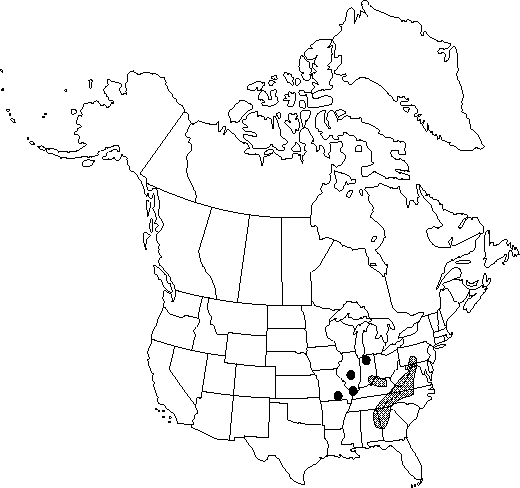Berberis canadensis
Gard. Dict. ed. 8, Berberis no. 2. 1768.
Shrubs, deciduous, 0.4-2 m. Stems dimorphic, with long primary shoots and short axillary shoots. Bark of 2d-year stems purple or brown, glabrous. Bud scales 1-1.5 mm, deciduous. Spines present, simple or 3(-7)-fid. Leaves simple; petioles 0.2-0.8(-1.3) cm. Leaf blade oblanceolate or sometimes narrowly elliptic, 1-veined from base, 1.8-7.5 × 0.8-3.3 cm, thin and flexible, base long-attenuate, margins plane, toothed, each with 3-12 teeth 0-1 mm high tipped with bristles to 0.2-1.2 × 0.1-0.15 mm, apex rounded or rounded-obtuse; surfaces abaxially dull, smooth, adaxially dull, ± glaucous. Inflorescences racemose, lax, 3-12-flowered, 2-5.5 cm; bracteoles membranous, apex acuminate. Flowers: anther filaments without distal pair of recurved lateral teeth. Berries red, oblong-ellipsoid, 10 mm, juicy, solid. 2n = 28.
Phenology: Flowering spring (Apr–May).
Habitat: In woods or glades, on rocky slopes and near rivers
Elevation: 100-700 m
Distribution

Ala., Ga., Ill., Ind., Ky., Md., Mo., N.C., Pa., Tenn., Va., W.Va.
Discussion
Berberis canadensis is susceptible to infection by Puccinia graminis.
The Cherokee Indians used scraped bark of Berberis canadensis in infusions to treat diarrhea (D. E. Moermann 1986).
Selected References
None.